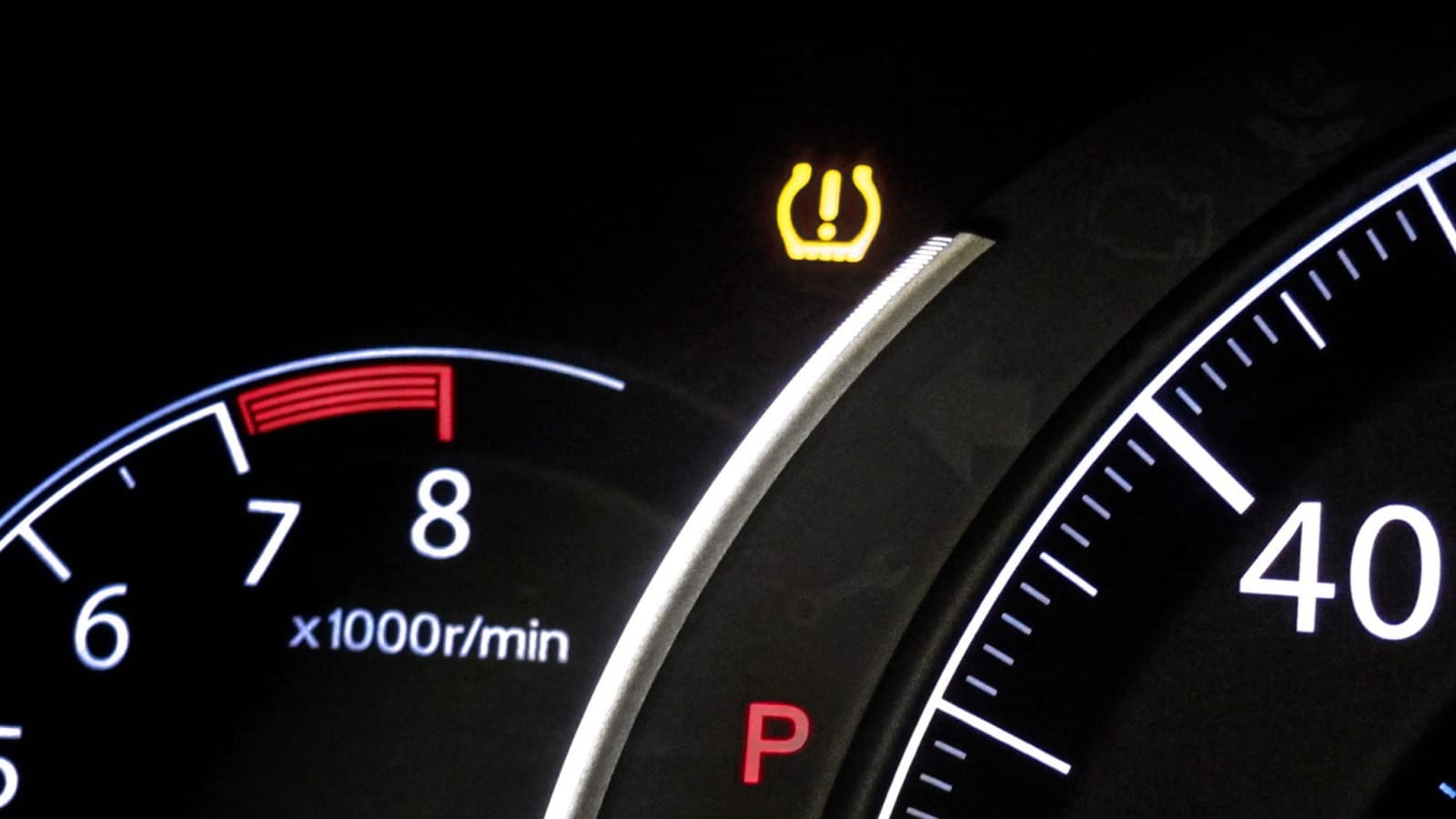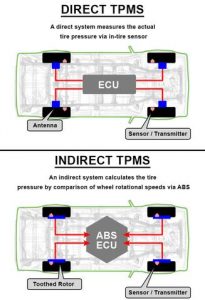

If you own a car that was made after 2007, your car is equipped with a tire pressure monitoring system (TPMS). With that being said, you may have faced the dreaded “low tire pressure” warning light (the horseshoe icon with an exclamation in the middle. If you ever see this light come on, it is most likely a sign that your tires need air.
How Do I Find the Correct Tire Pressure for my Car?
If there’s no sticker on the driver’s side door, you can usually find the specs in the owner’s manual. Most passenger cars will recommend 32 psi to 35 psi in the tires when they’re cold.
The idea behind a TPMS is primarily safety-related as underinflated tires offer a less stable ride, and they’re more prone to blowouts. Sensors within the tire, or on the car, send information to one or several modules in the car. These modules are programmed with a range of acceptable circumstances. For direct tire pressure monitoring, this is often between 28 and 35 pounds per square inch (psi) of air in the tire.
How Does the Tire Pressure Monitoring System Work?
Direct and Indirect Tire Pressure Monitoring Systems
 Direct TPMS gathers pressure data directly from the tire valve reporting pressure information in near real-time. The sensors read internal pressure, and sometimes temperature. The information received at the module is analyzed, and any issues with any of the tires are sent to the car’s vehicle information system or low-pressure light. When the tire hits a curb or the car gets into an accident, the sensor stem is subject to damage. Each time a sensor is changed, it generally has to be reprogrammed into the control module so it can be recognized. Most systems need to be retrained to identify the correct low tire when you get your tires rotated. Our technicians won’t simply rotate your tires in this instance, they will retrain your TPMS system as well!
Direct TPMS gathers pressure data directly from the tire valve reporting pressure information in near real-time. The sensors read internal pressure, and sometimes temperature. The information received at the module is analyzed, and any issues with any of the tires are sent to the car’s vehicle information system or low-pressure light. When the tire hits a curb or the car gets into an accident, the sensor stem is subject to damage. Each time a sensor is changed, it generally has to be reprogrammed into the control module so it can be recognized. Most systems need to be retrained to identify the correct low tire when you get your tires rotated. Our technicians won’t simply rotate your tires in this instance, they will retrain your TPMS system as well!
Indirect TPMS, on the other hand, relies on wheel speed sensor data to interpret the size of a tire based on how fast it rotates — a small tire would rotate faster than a larger tire, and an underinflated tire is smaller than one with proper inflation. Motorists must drive a substantial distance before an alert will be generated.
Why Does My TPMS Light Come on When it’s Cold?
“For every 10-degree drop in temperature, tire pressure decreases 1-2 PSI,” says Rich White, executive director of the Car Care Council. PSI stands for pounds per square inch and is a common unit for measuring pressure. Cold shrinks, warm expands. “It’s typical at this time of year for motorists to get TPMS warnings and then get worried about their tires.” Due to the cold weather, the volume of the air shrinks causing less air or less well-filled tires.
As the weather gets cooler, it is more likely for this dashboard light to come on, especially in the mornings. But just because it’s a common occurrence doesn’t mean it’s one you should ignore! Often, if the light does come on as soon as you start your vehicle in the morning, it may turn off as the car heats up or as the day gets warmer. If it does not turn off by itself, bring your vehicle down to Luke’s Auto Service in Verona New Jersey and our certified technicians will check it out for you!
Tire Pressure Monitoring System FAQ
Where is the TPMS reset button?
The TPMS reset button is often located beneath a vehicle’s steering wheel. If you can’t find it, check your car’s manual.
Why is my tire pressure light still on after filling tires?
If the TPMS warning light is still on once you’ve filled your tires with air, double-check your tires to make sure they are inflated to the right pressure. Some TPM systems need to be driven for several miles in order for the system to recognize the change in pressure.
Where are tire pressure sensors located?
Some systems are mounted outside the tire, but most manufacturers use a sensor mounted inside the tire.
Be sure to check your tires monthly to maximize tire health and spot problems early – especially in the winter months! The best time to do this is in the morning or when your vehicle hasn’t been driven in several hours. The tires should be “cold” to give the most accurate reading. Our certified technicians at Luke’s Auto Service in Verona, New Jersey, can assist you with any TPMS maintenance!
References:
Images:
